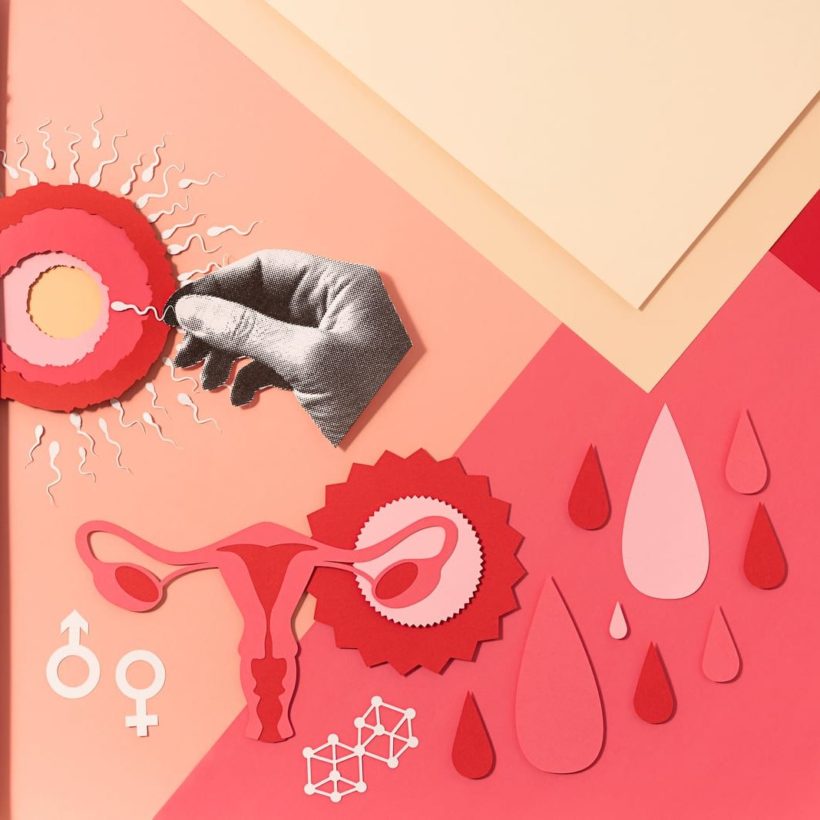You may already know the ins and outs of PMS, but are you familiar with PMDD? PMDD, which is short for the premenstrual dysphoric disorder, is a severe, and sometimes debilitating, version of PMS that affects approximately 5-8% of menstruating women each year. Like PMS, PMDD often occurs seven to ten days before a period and can last a few days into it. However, its symptoms are markedly different from those that accompany PMS — PMDD can be extreme and has the ability to interfere with everyday life. As someone who experienced abnormally difficult menstrual cycles often in my mid-twenties, it was a relief to me when I was diagnosed with PMDD. I finally had answers.
From information about its causes and symptoms to expert-backed suggestions on how it can be treated, read ahead to learn more about PMDD.
When You Realize Something Isn’t Right
After I graduated from college, the PMS that came before my periods reached new heights of intensity. My PMS, which once only brought a bit of breast tenderness and a day or two of feeling weepy, was instead now punctuated by intense headaches, uncomfortable dizziness, heavy abdominal pressure, extreme mental fuzziness, persistent acne, and insomnia. My anxiety and depression were so high during this time each month that I refused to leave my house. I would have panic attacks at my corner deli and words such as “agoraphobia” began popping up in my weekly therapy session. I was so confused.

A couple of years went by and it was the same vicious cycle each month — I convinced myself that this was just how my PMS was going to be going forward. It wasn’t until I mentioned the symptoms to my gynecologist in passing that I got a better idea of what was going on. “This may sound weird,” I remember telling her, “but I feel horrible a week before my period, like, not my normal PMS — I can’t sleep, I don’t want to do anything, my body feels totally off. Is this normal?” After keeping track of my pre-period symptoms, and their intensity, for a few menstrual cycles we both realized that what I was experiencing wasn’t just PMS, but PMDD.
What Makes PMDD Different From PMS?
PMS and PMDD are cut from the same cloth, so how are we supposed to know which one we may be experiencing? As it turns out, the distinguishing factor between the two is that PMDD comes with very extreme symptoms that can greatly interfere with how someone lives their life. In fact, Dr. Nichole Butler, a board-certified OB/GYN, FACOG, at Weiss Memorial Hospital’s Women’s Health Center in Chicago, describes PMDD as a more severe extension of PMS. “[For example], PMS may still have sadness but PMDD definitely has depression,” she says, “The depression may be severe, too”. The severe depression caused by PMDD may also be linked to higher suicide risk. Additional mental and emotional symptoms of PMDD can include paranoia, anxiety, trouble sleeping, anger, and difficulty concentrating.
Unfortunately, the effects of PMDD don’t end there. Along with psychological symptoms, PMDD has the ability to affect all parts of the body — and the way it does this may be surprising. For instance, those living with this disorder may complain of vision changes and increased respiratory problems, such as allergies and infections, around their period. Others may have gastrointestinal concerns, such as pelvic heaviness, vomiting, and abdominal cramping. Acne, dizziness, and heart palpitations are other common symptoms that tend to pop up with PMDD. I still remember the unique feeling of relief and shock when my doctor and I made the connection between PMDD and my pre-period dizziness, which was so bad at times that I would have to steady myself against a wall.

How is PMDD diagnosed?
Although there is no one simple test that can tell you if you have PMDD or not, doctors do have methods of how to diagnose this disorder. For instance, your doctor may ask for a complete medical history and perform physical and pelvic examinations to get a better idea of what is going on. They may also advise you to keep a diary for a few months, like what my doctor did, to help document any symptoms you may experience around and during your period. In order for a doctor to diagnose a patient with PMDD patients usually have to experience at least 5 PMDD symptoms, such as those mentioned earlier, during most of their menstrual cycles.
From having PMDD, I learned that the keyword is “severity”. For example, I would get moody during my usual PMS, but with PMDD I would get irate, incredibly depressed, and go through bouts of agoraphobia. Everything during my PMDD episodes felt incredibly heightened and intense. Daily tasks, such as getting on the subway or taking a meeting, felt one hundred times more difficult to do. The difference between PMS and PMDD, to me at least, felt like night and day.

What causes PMDD?
One of the trickiest things about PMDD is that it is very hard to figure out exactly why it is happening. Although the research on what causes PMDD is ongoing, doctors believe that this disorder may be triggered by the central nervous system (CNS) and its sensitivity to reproductive hormones. It is also thought that additional causes of PMDD may include stress and genetic factors, such as having a family history of mood disorders. For myself, I learned that a combination of stress, genetic factors, a lack of certain vitamins, and a sensitivity to hormones created the perfect premenstrual storm each month.
How can you treat PMDD?
Thankfully, there is some good news out there if you suffer from PMDD. Dr. Butler says that even though it may not be preventable, it can be successfully managed. “Treatment revolves around medication,” she explains. This medication is typically hormonal medication, which can help balance hormones, and medication to help treat psychological symptoms, such as depression. “Lifestyle modifications are also key components in treatment,” Dr. Butler adds. Simple changes to your daily routine, such as altering your sleep schedule, exercising, and improving your diet, can all have a profound effect on PMDD symptoms. In fact, studies have shown that women who took part in aerobic exercise regularly were less affected by premenstrual symptoms, such as depression and fatigue.
Besides traditional medication and lifestyle changes, people may also be interested in turning to alternative medicine for managing PMDD. For example, vitamin supplements, such as calcium and magnesium, and herbal supplements, such as chaste berry and ginger, may help alleviate symptoms. Acupuncture may also have the same beneficial effect.

My PMDD was so disruptive that after I was diagnosed I decided to do a whole lifestyle overhaul — I was that desperate. I got in touch with a natural doctor who prescribed me supplements, gave me bi-weekly acupuncture, and helped me clean up my diet (as it turns out, I was eating way too much sugar and dairy). I stuck with my weekly therapy, which helped a lot with stress management. I also started making small changes, such as going to sleep earlier, getting more exercise, and hydrating better, which also proved to help. Until today, I try diligently to keep all these areas in check as I know that if I don’t, those PMDD symptoms will start creeping up again — and that’s the last thing I want.
It is vital that you talk to your doctor
If you have experienced PMDD, then you may already know just how much premenstrual issues can affect all areas of life. Because of this, Dr. Butler shares that it is important to tell your doctor if you believe you are experiencing either PMDD or even PMS. “I want women to know that these conditions with associated symptoms are real and they are not exaggerating, overreacting or crazy,” she explains. “If a woman feels that she is suffering from either of these issues, seek help.”
We only recommend products we have independently researched, tested, and loved. If you purchase a product found through our links, Sunday Edit may earn an affiliate commission.







